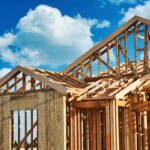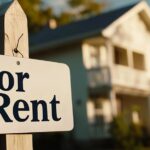Homeowners across the U.S. are facing a sharp increase in insurance costs, with premiums rising 21% from 2021 to 2023, according to a new analysis from First American. That translates to roughly $300 more per year per policy on average, outpacing both income growth and inflation and threatening the financial stability that homeownership typically represents.
This surge has been driven by a “perfect storm” of rising natural disaster risk, soaring construction costs, and higher claim payouts, reshaping the home insurance landscape nationwide.
According to the National Oceanic and Atmospheric Administration (NOAA), the annual number of billion-dollar disaster events has tripled—from an average of seven per year (1980-2019) to 23 annually from 2020-2024. Both 2023 and 2024 set records, with 28 and 27 such events, respectively. The annual cost of these disasters has risen from $55 billion to $151 billion.
Meanwhile, the cost of reinsurance—coverage that insurers use to mitigate their own risks—has also climbed. These rising costs are being passed directly to homeowners, especially those in disaster-prone areas.
At the same time, construction expenses have surged. Between 2020 and 2023, material costs increased 35%, with wages rising 26%, pushing premiums even higher. According to the Producer Price Index and Current Employment Statistics, those prices rose another 6% through early 2024.
The South has borne the steepest increases. Among the 50 largest U.S. metro areas, eight of the 10 cities with the fastest-growing premiums are in this region. In 2023, Southern homeowners paid an average of $2,120 annually, compared to $1,575 elsewhere.
In New Orleans, premiums spiked 51% from 2021 to 2023, adding $1,200 in annual costs and pushing the average above $3,500. Other Southern cities also saw substantial jumps: Jacksonville (38%), Tampa (33%), Orlando (31%), and Birmingham (27%).
Even inland areas like Richmond (25%), Atlanta (24%), and Houston (22%) reported steep increases due to tornado, hail, and wind damage.
For metros outside the South, Denver stands out with a 25.3% increase, driven up by wildfire and hail risk.
As severe weather events persist and economic pressures linger, experts warn premiums are likely to keep rising, further tightening budgets for both new and existing homeowners.
Click here for more on First American’s analysis of the nation’s home insurance market.






